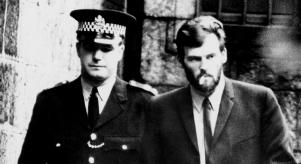
The strange story of the first ever plane hijack
On 16 July 1948, the world witnessed the creation of a new crime. On a plane flying to Hong Kong from the then-Portuguese colony of Macau, four men motivated by greed suddenly attempted to take control of the aircraft. The event would go down as the first-ever hijacking of a commercial plane, with terrible consequences for the perpetrators and innocent passengers alike.
An audacious conspiracy
The crime was so unprecedented that it wasn’t even known as hijacking at the time. The news called it an act of 'air piracy', while the clearly flabbergasted managing director of Cathay Pacific Airways said that 'the facts were so fantastic that they appeared incredible'. The target aircraft was a seaplane called Miss Macao, operated by Cathay Pacific to capitalize on Macau’s importance as a trading hub. The plane was therefore known to carry very wealthy businesspeople and even gold bullion back and forth between Macau and Hong Kong – a fact that tempted an unlikely group of men to attempt an audacious airborne heist.
These weren’t veteran thieves or hardened gangsters – they were three ordinary villagers from a nearby island. One of them, a trained pilot, came up with the idea of taking control of the seaplane, flying it to a suitably remote location and then ransom the wealthy passengers. The one snag was their lack of geographical knowledge. They needed someone who had an intimate awareness of local islands and coastlines. And that’s when they recruited the person whose name would become synonymous with the hijacking: a rice farmer called Wong Yu. He was to be the ‘fourth man’, simply there to guide the hijackers to the landing site after they’d subdued the passengers. But things were to go very, very wrong.
The fateful flight
At the controls of Miss Macao on 16 July 1948 were 27-year-old American pilot Dale Cramer and 23-year-old Australian first officer, Ken McDuff. Neither should really have been in the cockpit that day. Cramer had been brought in as the original pilot had developed an earache that morning, while McDuff was covering for the original first officer who’d fallen into the water while trying to moor the seaplane after an earlier flight.
An eclectic group of passengers were on board, including a millionaire executive at a gold bullion firm, a locally well-known jockey, a Coca-Cola employee, and the ringmaster of a travelling circus, who’d originally been set to sail to Hong Kong but booked a place on Miss Macao after missing his ferry. Among the group were the four hijackers, dressed in suits and hats like classic cinema gangsters. Metal detectors weren’t used in those days, so boarding a plane with handguns was tragically straightforward. Shortly after the flight took off from Macau, the gang whipped out their guns and ordered the pilots to hand over the controls. Clearly stunned and outraged by this unprecedented act, the pilots refused, and first officer McDuff lunged at one of the assailants, smacking him over the head with a mooring pole.
After that, in the words of Gavin Young, author of a book on Cathays Pacific, ‘all hell broke loose and bullets flew’, with the cramped cabin now a place of messy violence as passengers took on hijackers in a life and death struggle. Amid the chaos, one of the bullets struck pilot Dale Cramer in the back of his skull, killing him instantly. Cramer’s corpse slumped forward onto the controls, sending the plane onto a deadly trajectory towards the waters below. An official statement from the airline later summed up what happened next: ‘The plane must have turned right round and dived into the sea at a very steep angle, the impact tearing off the nose. The force of the water, under extreme pressure, rushed through the fuselage and tore away the tail. In all probabilities, it flushed out the sole survivor Wong Yu who was at the back of the plane.’
The enigmatic aftermath
Wong Yu, the fourth hijacker, was indeed the only person to emerge from the crash alive. After being pulled ashore, he was taken to hospital to be treated for broken limbs. Suspicion soon fell on him when the bullet-ridden remains of the plane were found and the suspiciously poor background of Wong Yu and his co-conspirators came to light. The trouble was, how to get Wong Yu to talk?
The police resorted to flamboyant tactics to coax out the truth. Recording devices were planted on the ward, while detectives posing as patients were placed in neighbouring beds – one of them even being smeared in pig’s blood to make it look like he’d been brought in from a car accident. Reports differ on what exactly triggered Wong Yu’s confession. According to one account, he bragged about his part in the hijacking to a police informer posing as a patient recovering from surgery. Another version suggests the police provided Wong Yu with a bogus newspaper article falsely saying the other three conspirators had also survived and were spilling their guts to investigators, prompting Wong Yu to panic and give his side of the story.
Either way, Wong Yu eventually confessed. The trouble was, nobody quite knew how to prosecute him. Portuguese authorities in Macau and British authorities in Hong Kong disagreed on whose jurisdiction Wong Yu fell under, as the crime had taken place in a plane between the two locations. Hard as it is to believe, the unresolved legal quagmire led to Wong Yu walking free from prison just a few years after the hijacking. Did he then return to a normal, quiet life? Was he executed by Chinese authorities in an act of unofficial punishment, as some have alleged? The epilogue of the world’s first plane hijacking will always remain a mystery.




